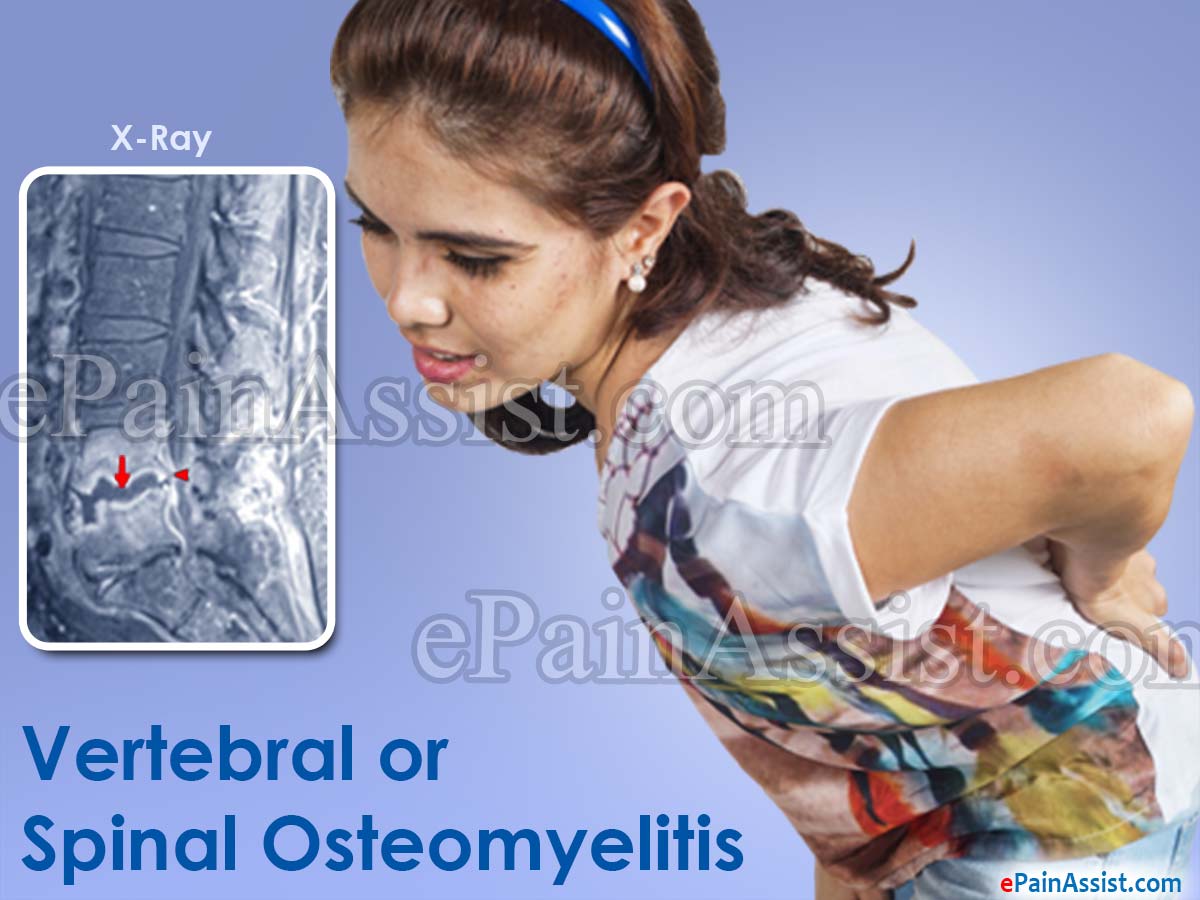Back Pain- A painful condition which can cause an individual to become sedentary and debilitate him in such a way that even simple motions can become difficult for that individual. There are many causes for back pain and one of the causes is termed as Vertebral Osteomyelitis. In this article, we will discuss about the various causes, symptoms, and management of spinal osteomyelitis or vertebral osteomyelitis condition.
How Do We Define Vertebral Osteomyelitis?
Vertebral osteomyelitis which is also called as Spinal Osteomyelitis is a form of osteomyelitis that is an infection of the bone.1 Vertebral Osteomyelitis is a rare type of bone infection, which is mainly concentrated in the spinal cord region. The instances of it are extremely rare and only about 5% of cases of bone infection are believed to be due to it. Vertebral Osteomyelitis can be acute or chronic based on the severity of the disease in which people with acute form of this disease have better outcomes than those with the chronic form of it

Causes of Vertebral or Spinal Osteomyelitis
The main characteristic feature of Vertebral Osteomyelitis is that it can start anywhere in body and spread to other parts via bloodstream. Numerous bacterial strains can also invade the body in this manner, thus making the original source of infection hard to find. That is the reason there is a general delay in the confirmation of diagnosis of Vertebral Osteomyelitis. The most common bacteria responsible for Vertebral Osteomyelitis is Staphylococcus Aureus.2 Another form called Methicillin-Resistant Staphylococcus Aureus is especially harmful and quite difficult to treat.
Symptoms of Vertebral or Spinal Osteomyelitis
Some General Symptoms Found In People With Vertebral or Spinal Osteomyelitis Are As Follows:
- Fever.3
- Swelling at infection site.
- Weakness of vertebral column and surrounding muscles.
- Night sweats.
- Difficulty moving from a standing to a sitting position.
- Persistent back pain and muscle spasms which may get so bad that it may render the individual incapacitated and make the individual sedentary, as even slightest of movement can cause extreme pain in the individual.
Diagnosis of Vertebral or Spinal Osteomyelitis
Diagnosing Vertebral or Spinal Osteomyelitis is pretty complex as a result of delay between disease onset and actual presentation of symptoms. The physician may order a complete blood draw before proceeding to radiological studies. In the blood draw, the C-reactive protein is an indicator of the presence of an infection.
Radiological studies are all required for people exhibiting symptoms of Vertebral or Spinal Osteomyelitis. Other more confirmatory studies are MRI, CT scan, and fine-needle aspiration biopsy.4 The plain-film x-ray is taken to look for disc compression between two vertebrae or degeneration of vertebrae.
Treatment for Vertebral or Spinal Osteomyelitis
Treatment for Vertebral or Spinal Osteomyelitis depends on the severity and extent of infection. Since intravenous antibiotics generally eliminates the pathogen responsible for the infection, hence physicians attempt this approach of treatment first before moving on to surgical management of Vertebral Osteomyelitis.

Nonsurgical Intervention Treatment for Vertebral or Spinal Osteomyelitis
Nonsurgical management of Vertebral or Spinal Osteomyelitis is generally the first choice of treatment as it has less risks of infecting the body. Intravenous antibiotics are given to eliminate the offending pathogen causing infection.
Surgical Intervention Treatment for Vertebral or Spinal Osteomyelitis
Surgery is required in people with advanced stages of Vertebral or Spinal Osteomyelitis. Spinal fusion is the most common surgical procedure, which destroys the offending pathogen and rebuilds the spine. Fusions can be approached anteriorly or posteriorly depending on the location of the infection.
